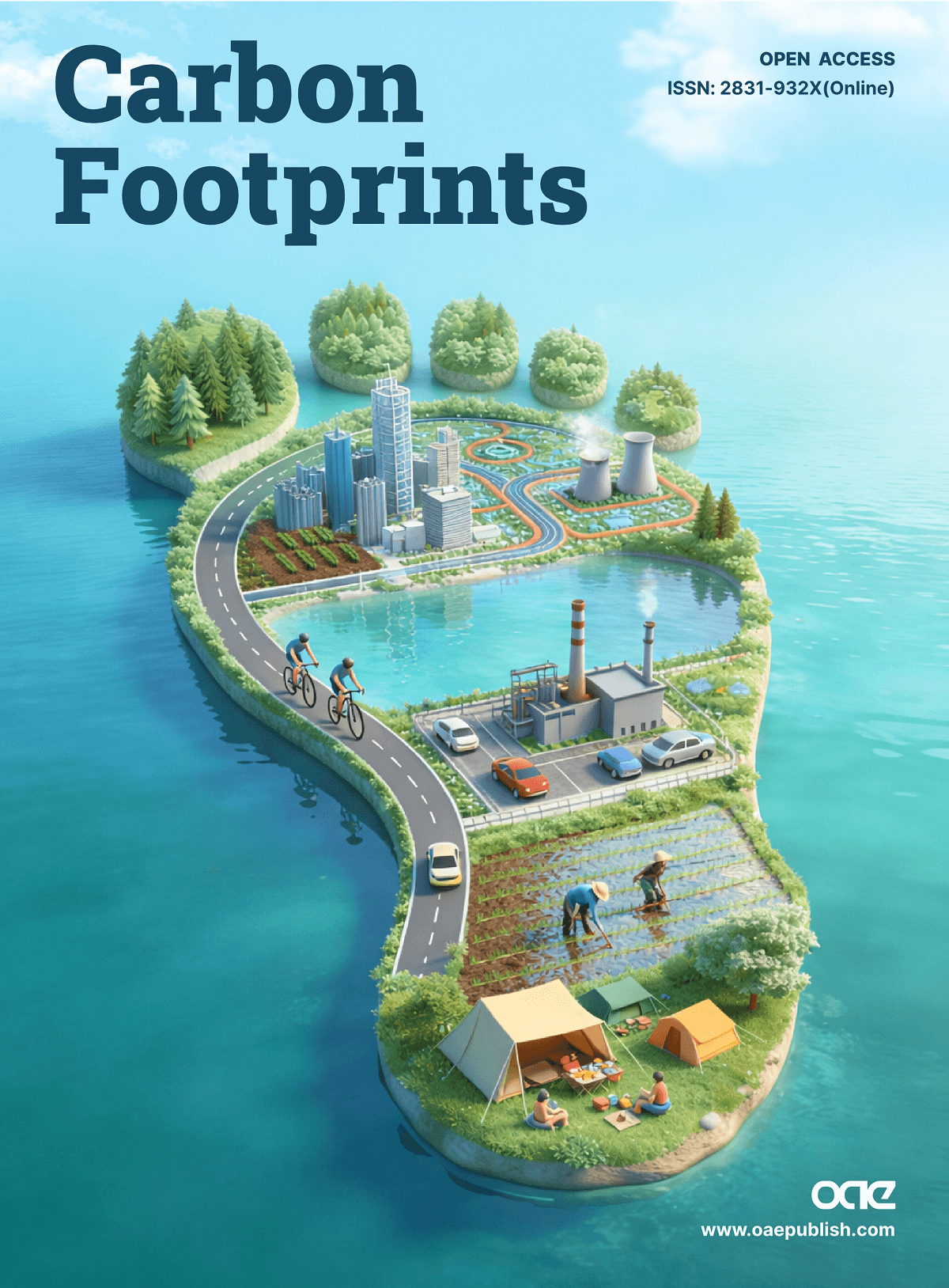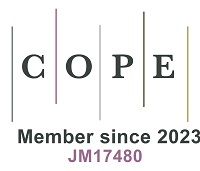REFERENCES
1. Richards DR, Friess DA. Rates and drivers of mangrove deforestation in Southeast Asia, 2000-2012. Proc Natl Acad Sci USA 2016;113:344-9.
2. Salmo SG, Gianan ELD. Post-disturbance carbon stocks and rates of sequestration: implications on “blue carbon” estimates in Philippine mangroves. Philipp Sci Lett 2019;12:122-32. Available from: https://scienggj.org/2019/PSL%202019-vol12-no02-p122-132-Salmo%20and%20Gianan.pdf [Last accessed on 27 Jul 2023].
3. Ashton EC. Threats to mangroves and conservation strategies. In: Das SC, Thammineni P, Ashton EC, editors. Mangroves: Biodiversity, Livelihoods and Conservation. Singapore: Springer Nature; 2022. pp. 217-30.
4. Abino AC, Castillo JAA, Lee YJ. Assessment of species diversity, biomass and carbon sequestration potential of a natural mangrove stand in Samar, the Philippines. For Sci Technol 2014;10:2-8. Available from: https://www.tandfonline.com/doi/full/10.1080/21580103.2013.814593 [Last accessed on 27 Jul 2023].
6. Jardine SL, Siikamäki JV. A global predictive model of carbon in mangrove soils. Environ Res Lett 2014;9:104013.
7. Asadi MA, Guntur G, Ricky AB, Novianti P, Andik I. Mangrove ecosystem C-stocks of Lamongan, Indonesia and its correlation with forest age. Res J Chem Environ 2017;21:1-9.
8. Aksornkoae S, Kongsangchai J. Mangrove forest in Thailand. Bangkok: The Royal Forest Department of Thailand; 1982. p.38.
9. Platong J. Status of mangrove forests in Southern Thailand. Wetlands International-Thailand Programme/PSU. Thailand: Prince of Songkla University; 1998. p.128.
10. Komiyama A, Kongsongchai J, Patanaponpaiboon P, Aksornkoae S, Ogino K. Socio-ecosystem studies on mangrove forests-charcoal industry and primary productivity of secondary stands. Tropics 1992;1:233-42.
11. Thappipidh W. Mangrove forest and forestry. Bangkok: The Royal Forest Department of Thailand; 1986. p.42.
12. Sayaka A, Erftemeijer PLA. Towards better mangrove management in Southern Thailand. Summary report on two workshops on mangrove forest management in Southern Thailand, 29-30 September and 27 November 1997, Hat Yai, Thailand. PSU/Wetlands International - Thailand Programme. Thailand: Prince of Songkla University; 1998. p.48.
13. Pumijumnong N. Mangrove forests in Thailand. In: Faridah-Hanum I, Latiff A, Hakeem K, Ozturk M, editors. Mangrove ecosystems of Asia: status, challenges and management strategies. New York: Springer; 2014. pp. 62-79.
14. Wanthongchai P. Ranong Biosphere Reserve. Bangkok: Department of Marine and Coastal Resources, Ministry of Natural Resources and Environment of Thailand; Undated. p.36.
15. Macintosh DJ, Ashton EC, Havanon S. Mangrove rehabilitation and intertidal biodiversity: a study in the Ranong mangrove ecosystem, Thailand. Estuar Coast Shelf Sci 2002;55:331-45.
16. JAM (Japan Association for Mangroves). Final report of the ITTO project on development and dissemination of re-afforestation techniques of mangrove forests [PD 11/92 Rev. 1 (F)]. Tokyo: Japan Association for Mangroves, Tokyo, Japan; 1997. p.104.
17. Aksornkoae S. Sustainable use and conservation of mangrove forest resource with emphasis on policy and management practices in Thailand. In: International workshop Asia-Pacific cooperation on research for conservation of mangroves; 2000 Mar 26-30, Okinawa, Japan. p.9.
18. Fourqurean JW, Smith TJ, Possley J, Collins TM, Lee D, Namoff S. Are mangroves in the tropical Atlantic ripe for invasion? Exotic mangrove trees in the forests of South Florida. Biol Invasions 2010;12:2509-22.
19. Meepol W. Carbon sequestration of mangrove forests at Ranong Biosphere Reserve. J For Manag 2010;4:33-47. Available from: https://kukrdb.lib.ku.ac.th/journal/JFM/search_detail/result/35172# [Last accessed on 29 Jul 2023] (In Thai with English abstract).
20. Komiyama A, Poungparn S, Kato S. Common allometric equations for estimating the tree weight of mangroves. J Trop Ecol 2005;21:471-7.
21. Howard J, Hoyt S, Isensee K, Telszewski M, Pidgeon E. Coastal blue carbon: methods for assessing carbon stocks and emissions factors in mangroves, tidal salt marshes, and seagrasses. Conservation International, Intergovernmental Oceanographic Commission of UNESCO, International Union for Conservation of Nature. Arlington, Virginia, USA. 2014. Available from: https://www.cifor.org/knowledge/publication/5095 [Last accessed on 27 Jul 2023].
22. Heiri O, Lotter AF, Lemcke G. Loss on ignition as a method for estimating organic and carbonate content in sediments: reproducibility and comparability of results. J Paleolimnol 2001;25:101-10.
23. Kauffman JB, Heider C, Cole TG, Dwire KA, Donato DC. Ecosystem carbon stocks of Micronesian mangrove forests. Wetlands 2011;31:343-52.
24. Masagca JT. Feeding ecology of tree-climbing mangrove sesarmid crabs from Luzon, Philippines. Biotropia 2009;16:1-10.
25. Tamai S, Lampa P. Establishment and growth of mangrove seedling in mangrove forests of Southern Thailand. Ecol Res 1988;3:227-38. Available from: https://link.springer.com/article/10.1007/BF02348582 [Last accessed on 29 Jul 2023] .
26. Putz FE, Chan HT. Tree growth, dynamics, and productivity in a mature mangrove forest in Malaysia. For Ecol Manag 1986;17:211-30. Available from: https://www.sciencedirect.com/science/article/abs/pii/0378112786901131 [Last accessed on 29 Jul 2023].
27. Westoby M. The self-thinning rule. In: MacFadyen A, Ford ED editors. Advances in ecological research. London: Academic Press; 1984. pp. 167-225.
28. Pranchai A. Regeneration and self-thinning processes in a restored Rhizophora apiculata plantation in southern Thailand. Agric Nat Resour 2017;51:390-4.
29. Gong WK, Ong JE. The use of demographic studies in mangrove silviculture. Hydrobiologia 1995;295:255-61.
30. Kongkeaw C, Kittitornkool J, Vandergeest P, Kittiwatanawong K. Explaining success in community based mangrove management: four coastal communities along the Andaman Sea, Thailand. Ocean Coast Manag 2019;178:104822.
31. Tamai S, Nakasuga T, Tabuchi R, Ogino K. Standing biomass of mangrove forests in southern Thailand. J Jpn For Soc 1986;68:384-8.
32. Speybroeck D. Regeneration strategy of mangroves along the Kenya coast: a first approach. Hydrobiologia 1992;247:243-51.
33. Aluri JSR, Karyamsetty HJ. Reproductive ecology of
34. Macintosh DJ, Aksornkoae S, Vannucci M, Field CD, Clough BF, et al. Final report of the integrated multidisciplinary survey and research programme of the Ranong mangrove ecosystem. Bangkok: Funny Publishing Ltd; 1991. p.183.
35. Christensen B, Wium-Andersen S. Seasonal growth of mangrove trees in Southern Thailand. I. The phenology of Rhizophora apiculata Bl. Aquatic Botany 1977;3:281-6.
36. Machin J. Mangrove restoration, a case for an evidence based approach. PhD Thesis, James Cook University. 2015. p.260. Available from: https://researchonline.jcu.edu.au/46580/ [Last accessed on 27 Jul 2023].
37. Kridiborworn P, Chidthaisong A, Yuttitham M, Tripetchkul S. Carbon sequestration by mangrove forest planted specifically for charcoal production in Yeesarn, Samut Songkram. Int J Sustain Energy 2012;3:87-92. Available from: https://www.semanticscholar.org/paper/Carbon-Sequestration-by-Mangrove-Forest-Planted-for-Kridiborworn-Chidthaisong/2b21de2960c9c896ee6319efa4e997d83967eff5 [Last accessed on 27 Jul 2023].
38. Alongi DM, Dixon P. Mangrove primary production and above- and below-ground biomass in Sawi Bay, southern Thailand. Phuket mar biol Cent Spec Publ 2000;22:31-8. Available from: https://www.dmcr.go.th/dmcr/fckupload/upload/147/file/SP_paper/2000%20Vol.22%204Alongi.pdf [Last accessed on 29 Jul 2023].
39. Komiyama A, Ogino K, Aksornkoae S, Sabhasri S. Root biomass of a mangrove forest in southern Thailand. 1. Estimation by the trench method and the zonal structure of root biomass. J Trop Ecol 1987;3:97-108.
40. Win Maung Aye. Ecological studies on locally-managed mangrove forests in Tanintharyi region, Myanmar. PhD Thesis. Japan: Graduate school of Asian and African area studies, Kyoto University; 2020. p.158.
41. Meepol W. Aboveground and underground biomass estimation of mangrove forests in the Ranong Biosphere Reserve. Mangrove Forest Research Center. Forthcoming 2020.
42. Jachowski NRA, Quak MSY, Friess DA, Duangnamon D, Webb EL, Ziegler AD. Mangrove biomass estimation in Southwest Thailand using machine learning. Appl Geogr 2013;45:311-21.
43. Ong JE. Mangroves and aquaculture in Malaysia. Ambio 1982;11:252-57. Available from: https://www.jstor.org/stable/4312815 [Last accessed on 29 Jul 2023].
44. Komiyama A, Havanond S, Srisawatt W, et al. Top/root biomass ratio of a secondary mangrove (Ceriops tagal (Perr.) C.B. Rob.) forest. For Ecol Manag 2000;139:127-34.
45. Komiyama A, Ong JE, Poungparn S. Allometry, biomass, and productivity of mangrove forests: a review. Aquatic Botany 2008;89:128-37.
46. Purbopuspito J, Murdiyarso D, Warren M, et al. Mangrove soil properties and their carbon pools among large islands in Indonesia. 2014. Available from: https://www.researchgate.net/publication/287347108 [Last accessed on 27 Jul 2023].
47. Barillé-Boyer AL, Barillé L, Massé H, Razet D, Héral M. Correction for particulate organic matter as estimated by loss on ignition in estuarine ecosystems. Estuar Coast Shelf Sci 2003;58:147-53.
48. Sanderman J, Hengl T, Fiske G, et al. A global map of mangrove forest soil carbon at 30 m spatial resolution. Environ Res Lett 2018;13:055002.
49. Tue NT, Dung LV, Nhuan MT, Omori K. Carbon storage of a tropical mangrove forest in Mui Ca Mau National Park, Vietnam. Catena 2014;121:119-26.
50. Nam VN, Sasimoto SD, Murdiyarso D, Purbopuspito J, MacKenzie RA. Carbon stocks in artificially and naturally regenerated mangrove ecosystems in the Mekong Delta. . Wetl Ecol Manag 2016;24:231-44.








